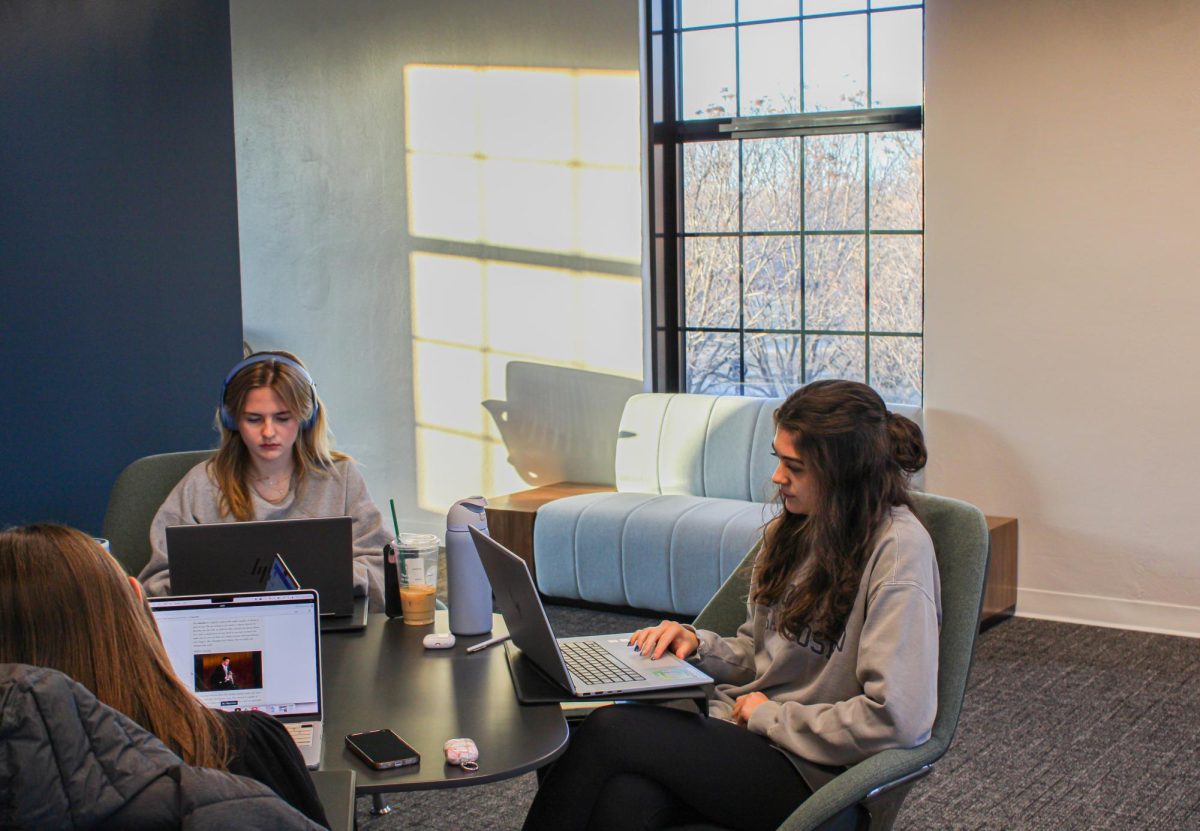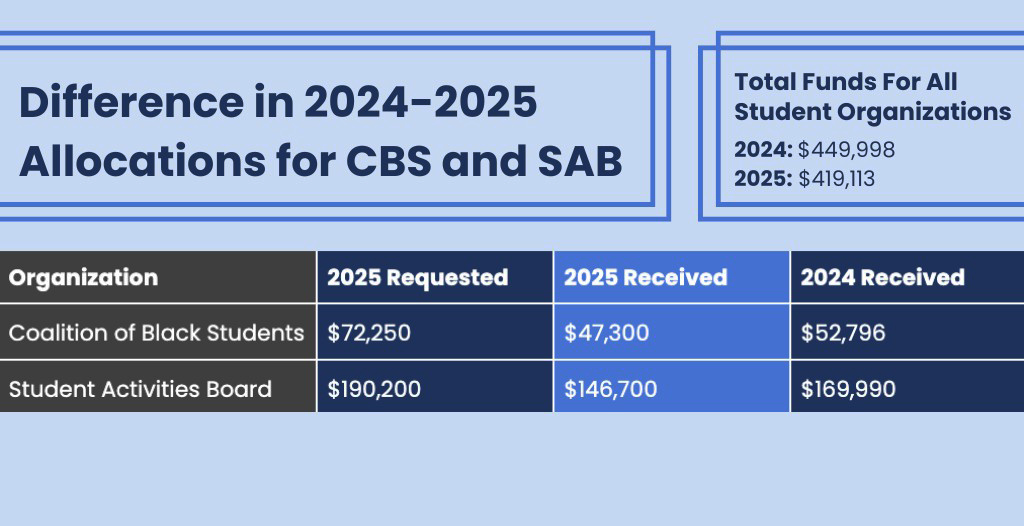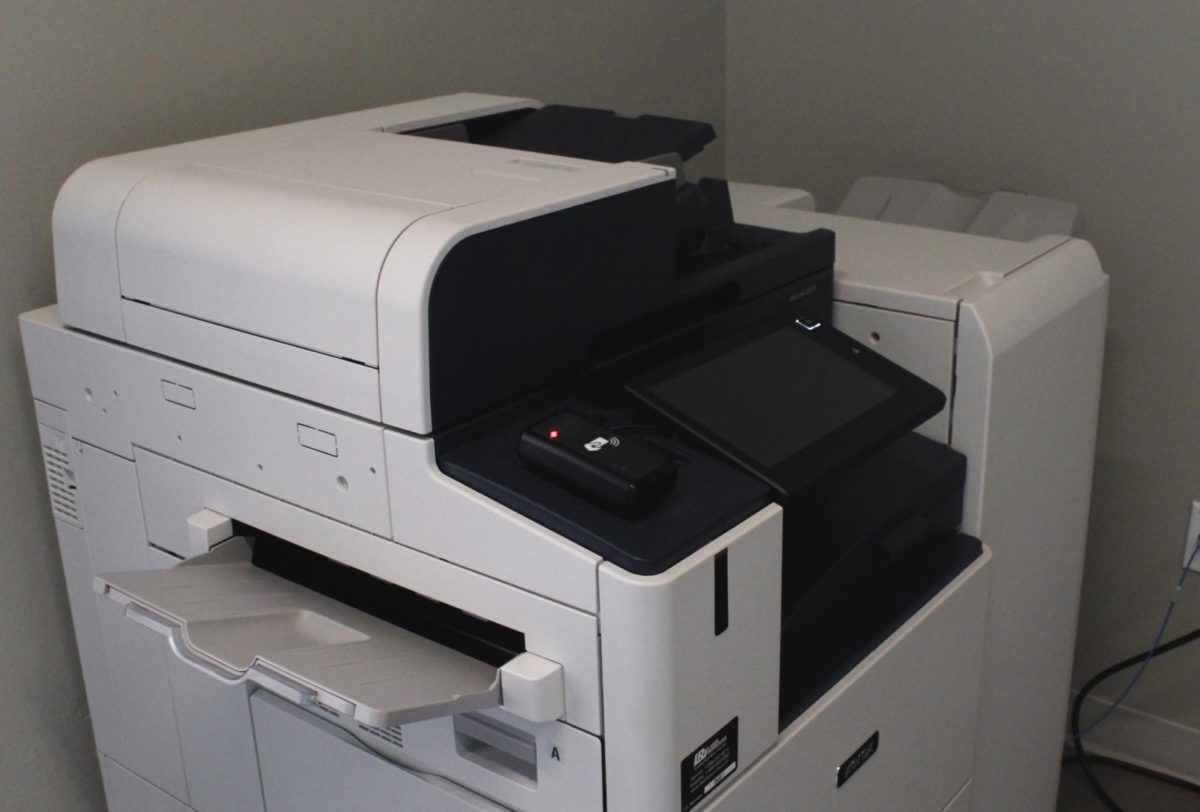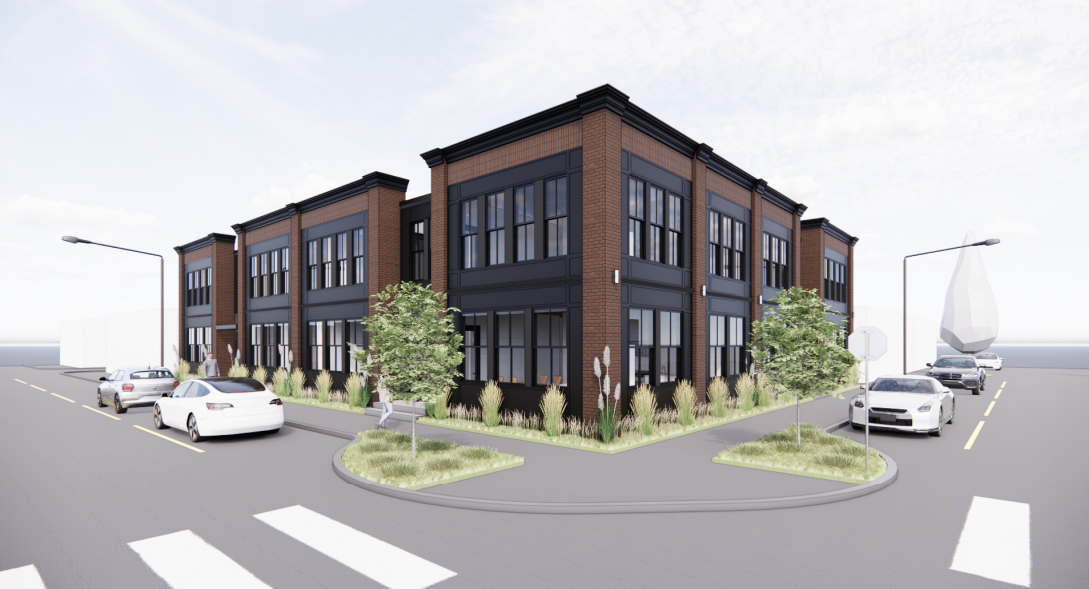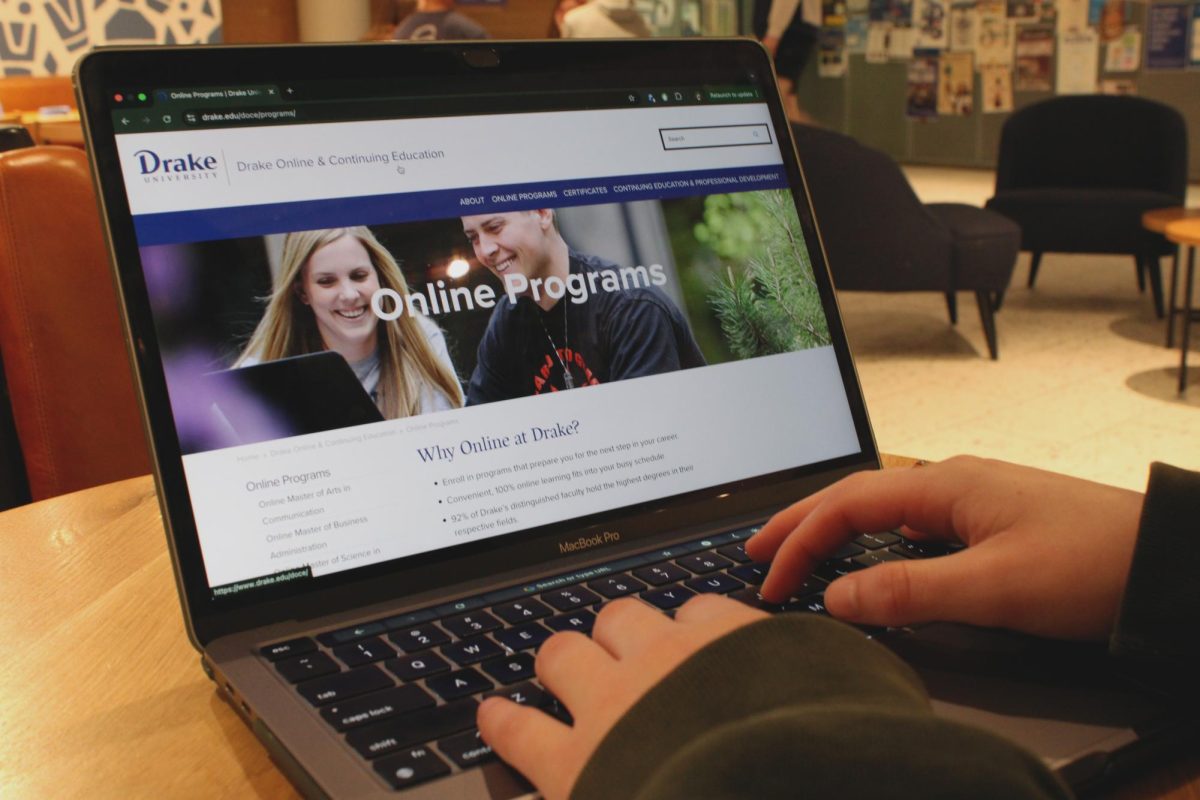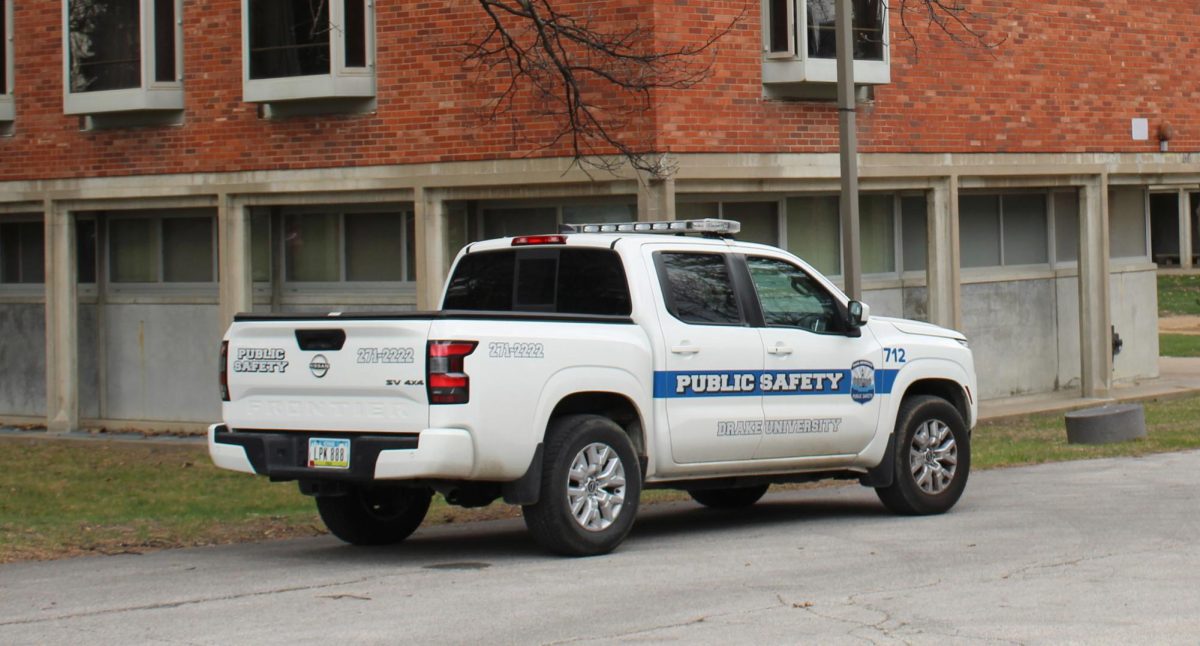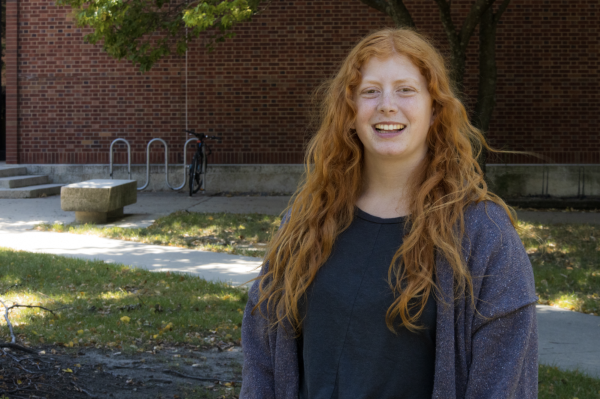The smell of fresh paint fills the air of the new Johansen Student Center in Morehouse Hall. New study spaces occupy all three floors of the former dormitory. Colorful couches and tall and low tables decorate these spaces and encourage collaboration, giving students space to work on projects and host meetings or events.
“Space matters when it comes to community,” Kristin Economos, Director of the Donald V. Adams Leadership Institute, said. “It’s really hard to feel a sense of camaraderie and a sense of group identity without having a space to claim for it.”
The construction of the student center started in the summer of 2023. The Johansen Student Center is named after Greg and Cie Johansen, who made Drake’s largest single-donor donation of $28 million in 2024.
Signs of construction are still present in every corner of the building. They will be there as Drake finishes renovations and finalizes the building’s design.
“Be flexible and gracious with the fact that even though it’s open, it’s going to be a little bit of time for it to feel settled,” Economos said.
The designers took accessibility into account during the construction of the building, Lynne Cornelius, associate dean of students, said. Morehouse is now equipped with an elevator. Room signs throughout the building align with the best practices for accessible signage and are modeled after other standards across campus. In many of the spaces in the building, there are also various seating postures to create comfortable seating options for all.
The study areas within the Johansen Student Center are not replicated elsewhere on campus, according to Cornelius. The blend of independent and collaborative study spaces creates a unique area for students to gather.
Morehouse also has a personalized combination of study and creative spaces. The latter includes the Lacy Workroom, a new creative workshop for students to work on projects or for groups and organizations to host craft nights.
“Drake has not had space like this. You can find a space in the building to study alone, work in small or large groups, host events and gather formally and informally. The options to find something that suits your needs are endless,” Cornelius said. “It is so fun to walk through the building and find students already utilizing all areas.”
Cornelius sees this building as an excellent place for student organizations to host weekly meetings and special events. The Johansen Student Center is the new home for many student organizations, with Student Senate, Student Activities Board and Fraternity and Sorority Life having offices there. A new hall on the ground floor called The Fisher-Stalter Hall is intended for student organizations to host special events like guest speakers.
“At Drake, we have some particularly meaningful leadership opportunities and programs for students that existed in face and name but not space,” Economos said. “Now having that space gives a sense of identity and community that helps us accomplish the mission of what we’re trying to do better.”
The Development and Adams Leadership Institute offices also moved into the building. The Adams Leadership Institute has two designated spaces inside the Johansen Student Center. These spaces purposely do not look like classrooms, which Economos said reflects how she does not want the different levels of Adams Insitute to feel like a required class.
“We want you to have space to practice with low stakes, where they are not getting grades and none of this affects their GPA. Students who are part of this leadership institute are doing it to gain skills to become people others want to follow and they can’t practice things if they don’t have the space and the permission to be bad,” Economos said. “When we were in classroom space, it was really hard to get students to understand that it wasn’t a class.”
Another advantage to these spaces is that the Adams Leadership Institute can increase programming. Economos said that she constantly gets feedback from students in the program saying that they wish they could do more with the people in the program, so she plans to offer more optional programming in these spaces, such as book clubs.
“Having space allows us to try new things in the curriculum and do it in a space that feels accessible and informal for students,” Economos said.
Katelyn Martin, president of the Student Activities Board, has gotten familiar with the new student center by spending time in the new SAB office.
”I am excited to see students utilize this space and collaborate. I have loved all of the natural lighting the Johansen Center has provided along with the various studying areas that are available for students,” Martin said. “I encourage all students to check out the new building and stop by the new SAB office.”
Overall, Economos said that the space is meant to offer a variety of services to students. Student input went into the design of each space, ensuring that the design was flexible. Cornelius said that this flexibility encourages collaboration among students.
“Some spaces you can tell are meant for private conversations and individual students working on a project, while other areas are designed for community. You can see that there are a lot of places where students could interact with each other,” Economos said.
Student input will continue to be a factor in the design and use of this space. QR codes will hang around the building for students, staff and faculty to provide feedback about how they use the room, what they like best about it and how they feel these spaces could be improved.
“Our hope is that students will say that they feel at home in the space — that they feel like it is theirs to use freely and that it is a great space to host meetings, gatherings and events,” Cornelius said.

